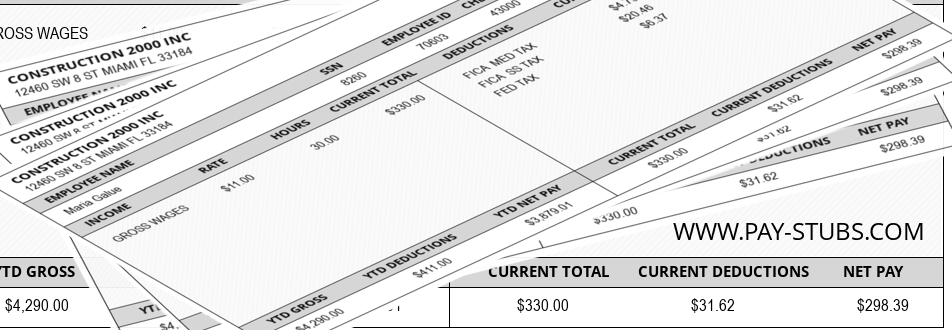Revolutionize Your Business with Paperless Pay Stubs

One revolutionary change that can significantly impact your business operations is the transition to Paperless Pay Stubs. As businesses embrace digital transformation, the move towards paperless payroll processes has become a key strategy for efficiency, cost savings, and environmental responsibility.
Definition of Paperless Pay Stubs
Paperless pay stubs, also known as electronic pay stubs, are digital versions of traditional paper pay stubs. They provide employees with easy and secure access to their payment information online. Over the years, payroll processes have evolved from manual calculations to sophisticated digital systems. Paperless pay stubs represent the latest advancement, offering a range of benefits to both employers and employees.
Advantages of Paperless Pay Stubs
1. Environmental Impact
Going paperless is not just a trend; it’s a responsible choice. By eliminating paper from payroll processes, businesses contribute to reducing deforestation and environmental impact.
2. Cost Savings
The financial benefits of transitioning to paperless pay stubs are substantial. Businesses save on paper, printing, and distribution costs, leading to long-term financial gains.
3. Accessibility and Convenience
Employees can access their pay stubs anytime, anywhere, fostering a culture of transparency and convenience. This accessibility also streamlines processes for HR and payroll departments.
Real-Life Success Stories
1. Companies that Have Embraced Paperless Pay Stubs
Highlighting success stories of businesses that have successfully implemented paperless pay stubs can inspire and motivate others to make the switch.
2. Positive Impact on Employee Morale and Productivity
Showcase how the transition positively impacted employee morale, satisfaction, and overall productivity within organizations.
Future Trends in Payroll Technology
1. Continuous Innovation
The future of payroll technology involves continuous innovation. Staying updated with the latest trends ensures businesses remain competitive.
2. Integration with HR Systems
The seamless integration of payroll and HR systems enhances overall organizational efficiency and data accuracy.
3. Predictive Analytics
Leveraging predictive analytics in payroll systems can provide valuable insights for strategic decision-making.
Tips for a Smooth Transition
1. Planning and Strategy
Thorough planning and a well-defined strategy are crucial for a smooth transition. Identify potential challenges and devise solutions in advance.
2. Monitoring and Adjusting
Continuous monitoring allows for the identification of any issues that may arise post-implementation. Prompt adjustments ensure ongoing success.
3. Seeking Professional Guidance
Consulting with experts in payroll and HR can provide valuable insights and guidance throughout the transition process.
The Role of HR in the Paperless Revolution
1. Empowering HR Professionals
The transition to paperless pay stubs empowers HR professionals to focus on strategic tasks, fostering a more dynamic and engaged HR department.
2. Streamlining Administrative Tasks
Automation of administrative tasks allows HR teams to allocate time and resources more efficiently, contributing to overall organizational success.
Measuring Success and ROI
Establishing key performance indicators (KPIs) helps measure the success of the paperless pay stub system over time. Regularly analyzing cost-benefit ratios ensures that the investment in the paperless system continues to provide tangible returns.
Industry Compliance and Regulations
Regularly update and educate the payroll team on industry compliance and regulatory changes. Adaptability is key. Proactively address and adapt to any changes in industry regulations to avoid compliance issues.
FAQs
Q1. Is transitioning to paperless pay stubs a complex process?
Ans. Transitioning requires careful planning, but with the right strategy and tools, it can be a smooth and beneficial process.
Q2. How can paperless pay stubs improve employee engagement?
Ans. Paperless pay stubs provide employees with easy access to their financial information, fostering transparency and engagement.
Q3. What security measures are essential for a paperless pay stub system?
Ans. Encryption, secure servers, and authentication protocols are critical security measures for protecting sensitive employee information.
Q4. Can paperless pay stubs be customized to suit industry-specific needs?
Ans. Yes, modern systems allow for customization to address the unique payroll requirements of different industries.
Q5. What are the key indicators of a successful paperless pay stub system?
Ans. Key performance indicators (KPIs) and regular analysis of cost-benefit ratios are essential for measuring success.
